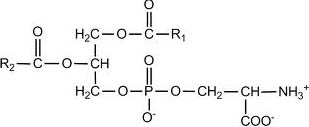Phosphatidyl Serine
ADHD is now widely accepted as a legitimate human condition with records of its description dating back to at least the 18th century when it was considered a sustained restlessness of the mind. Early physicians advocated special education for children born with ADHD in that this condition was accounted for by the abnormalities of the nerves contrary to environmental factors such as upbringing practices.

With the advent of psychiatry in the 20th century surfaced a number of studies linking ADHD to physiological makeup and activities described as not normal. This continuing concern among parents and researchers alike led to researches on a number of chemical compounds that target specific brain functions, including phosphatidyl serine much known as a biochemical component of cell membranes in the body.
History of Attention-deficit Hyperactivity Disorder
The first known scientific inquiry into this disorder was in 1798 when ADHD was referred to as fidgets. A Scottish-born physician, Sir Alexander Crichton, documented his observations on the inability of some children to keep attention even in environments making use of corporal punishment as a disciplinary measure. He noted that this condition seemed to get better with age while exhibited to a noticeable degree, if not intolerable, at young age, describing every possible stimulus contributing to the impairment of attention such as an otherwise unnoticeable change in room temperature and a need to meet a desirable level of comfort.
At the turn of the 20th century, Sir George Frederick Still published his lectures on, as he put it, an abnormal psychical conditions in children. He observed that the moral flaws evident in children not good in academics but equally as quick-witted as any other child outside the classroom were caused by a mental condition governing the ability of the human body to sustain attention, adding emphasis on the moral consciousness being “the control of action in conformity with the idea of the good of all”. This mental condition, as he proposed, was predetermined by genetics or resulted from injuries.
Phosphatidyl Serine: Targets of Ongoing ADHD Studies
ADHD as the mental condition varies in different levels but is commonly associated with hyperactivity. Up to now the scientific community hasn’t come to a conclusion as to which genetic factors are largely responsible for ADHD. However, studies underway point to ADHD implicating genes that have an effect on dopamine levels. Phosphatidyl serine being a phospholipid that promotes fluidity between cells, including nerve cells in the brain and the spinal cord, is now tied to dopamine transporters and receptors, having yielded positive results among patients diagnosed with ADHD.
Since phosphatidyl serine displays no adverse effects, it has been granted a qualified health claim by the US Food and Drug Administration to possibly reduce the risk of certain mental disorders. In the past few years it has been in use as a therapeutic agent in dopamine-related disorders and added to dietary supplements specialized for ADHD patients.

